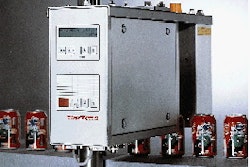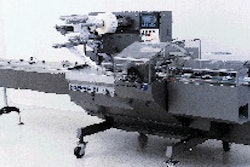Turn to any sector and you'll hear the same thing: a wave of creative development-keyed to the needs of packagers like you-is set to crest. New developments in materials, machines and services are approaching commercial debuts this year.
Driven by specific demands from manufacturers, a number of "new and novel" 1998 packaging developments will extend the boundaries of paper, glass, plastic and metal packaging in predictable directions: lighter, stronger, more environmentally sensitive, less expensive. That litany underscores one packaging truism. What's out there on the shelves is already lighter, stronger, more environmentally sensitive and less expensive than earlier generations. Coming developments will move us farther along the continuum.
Mostly, packaging's 1998 progress will consist of discreet advances, although a "revolutionary breakthrough" or two is distinctly possible. Six areas we consider particularly fertile breeding grounds for new packaging ideas are:
1. Plastic Containers: "Hot! Hot! Hot! And beyond." Formulating plastics so containers made of them can be hot filled-maybe even pasteurized-will continue to occupy resin producers and blowmolders this year. At the same time, some packagers are cooling to the challenge (and cost) of hot-fillable plastics because consumers are accepting preservative-loaded drinks in "dairy fresh" translucent or opaque bottles. Consequently, multilayer olefin bottles could challenge polyester for drink market share. PET (straight or fortified) will continue to be the focus of most developmental efforts.
Three advances you'll hear more about in the coming months: multilayer liquid crystal polymer (LCP) containers; compression stretch blowmolding, one of the plastic processing advances Dr. Emery I. Valyi is turning over to University of Massachusetts Lowell Research Foundation; beer in plastic bottles (see p. 2). Anheuser Busch and others now believe they've found more than one plastic bottle composition technically capable of holding beer. Now they're looking for one that's affordable as well.
2. Packaging Machinery: "Smarter. Faster. Smaller. Abler." Units that are more broadly functional than any previously offered will characterize the 1998 packaging machinery model year. Increasingly sophisticated controls and diagnostics continue to improve "operator friendliness." While capabilities are being extended, changeover times to accommodate different package sizes and materials will be shorter. Pack Expo (Chicago's McCormick Place, November 8-12) will showcase problem-solving, productivity-boosting designs.
Two developments apt to have an impact on packaging machinery developments-but probably not before year's end: Microturbines and Resonant Macrosonic Synthesis (RMS). The former could facilitate placement of packaging lines in locales not yet reached by power lines; the latter could lead to a generation of high-efficiency systems with fewer mechanical parts.
3. Stand-Up Pouches: "Don't just stand there, DO something!" That's the new rallying cry of packagers considering flexible pouching options. A number of unique stand-up pouch features including improved easy-opening, resealing devices and dispensing fitments that add value to stand-ups will be unveiled before year's end. Mini- to mega-size stand-ups will move into new product categories including dairy, frozen foods, condiments, medical/pharmaceuticals and photographic films. Primary and secondary packaging systems that operate at speeds that challenge bottles, jars, boxes, tubs, etc. will transform the status of stand-up pouches from novelties to mainstream packaging options.
4. Closures: "More openings." Enhanced barriers and "adult-friendly" child-resistance are two closure advances that will be making news this year. The trend toward single-serve plastic bottles has pressed cap-makers to bolster the barriers of their offerings with oxygen scavengers and impenetrable shields. A third will be the progress plastic and metal closure manufacturers are making in upgrading the marketing and graphic appeal of their offerings.
5. Metal Cans: "Very canny, this business." Although they've been pronounced dead more than once, metal cans still have a lot of life (and products) in them. Beyond wider-mouth ends, which we'll see lots more of, 1998 could bring with it a lot of metal can excitement. Ball Corp. (Muncie, IN) and Crown Cork & Seal Co., Inc. (Philadelphia) are working on technologies to dramatically (i.e., noticeable from six feet away) shape cans. Laminated foil cans and one-piece designs may not be commercially ready next year, but their gestation period is likely to end before the 20th century does. One consortium is looking to revolutionize the look and weight of beverage cans by rethinking end/seam designs. And look for shaped food cans with decorative, full-panel pull tops to transform some commodity items into specialties (To move into the value-added "Home Meal Replacement" category, canned hash needs the consumer value/appeal/ convenience of an upgraded can).
6. Internet's Relevance: "Buying/selling packaging.com." Is this the year the Internet becomes a legitimate channel for buying/selling certain packaging products? Could be. Stock containers, packaging machinery parts, supplies (inks, adhesives), and closures lend themselves to online sales. Don't expect widespread ability to buy online just yet, though. Most company web sites (packaging and otherwise) aren't programmed for sales. While Web commerce won't replace face-to-face presentations or discussions, 24-hour/day e-mail is already a more effective contact channel than voice mail, where phone tag often goes into extra innings.
Have we overlooked anything? Of course we have. This business' creativity is far too pervasive to be channeled into six sectors. Your insights and predictions are welcome. Send them to me at [email protected].























